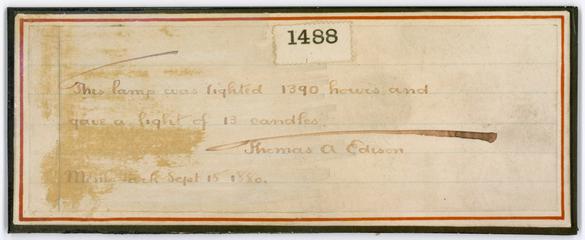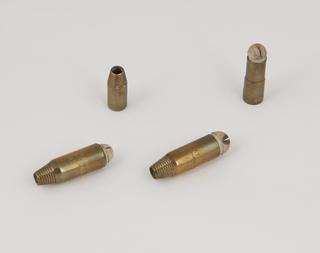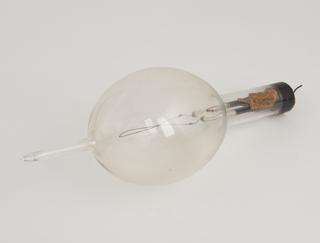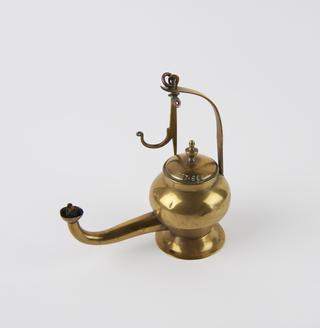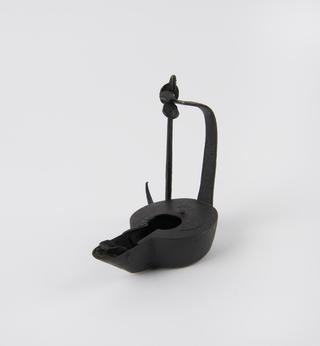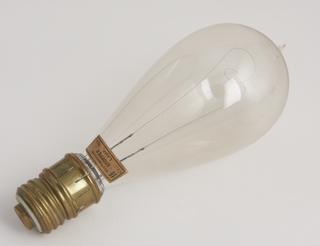
Swan electric lamp
- maker:
- Joseph Wilson Swan




Early carbon and rod filament incandescent electric lamp, by Sir Joseph Wilson Swan, England, 1878-1879
Early carbon and rod filament incandescent electric lamp 1878-9. Made by the English chemist, Joseph Swan (1827-1914).
The first practical electrical incandescent lamps were invented independently in the late 1870s by Joseph Swan in England and Thomas Edison in the USA. Advances in filament design, vacuum technique and glass-blowing led to the rapid refinement of the lamps and ultimately to the ubiquity of electric lighting. Edison himself supervised the installation of the world's first permanent, commercial central power system, which became operative in September 1882, to power electric light.
Details
- Category:
- Lighting
- Object Number:
- 1908-33
- Materials:
- mahogany (wood), glass, brass (copper, zinc alloy) and metal (unknown)
- type:
- electric lamp
- credit:
- Sir Joseph Wilson Swan.
